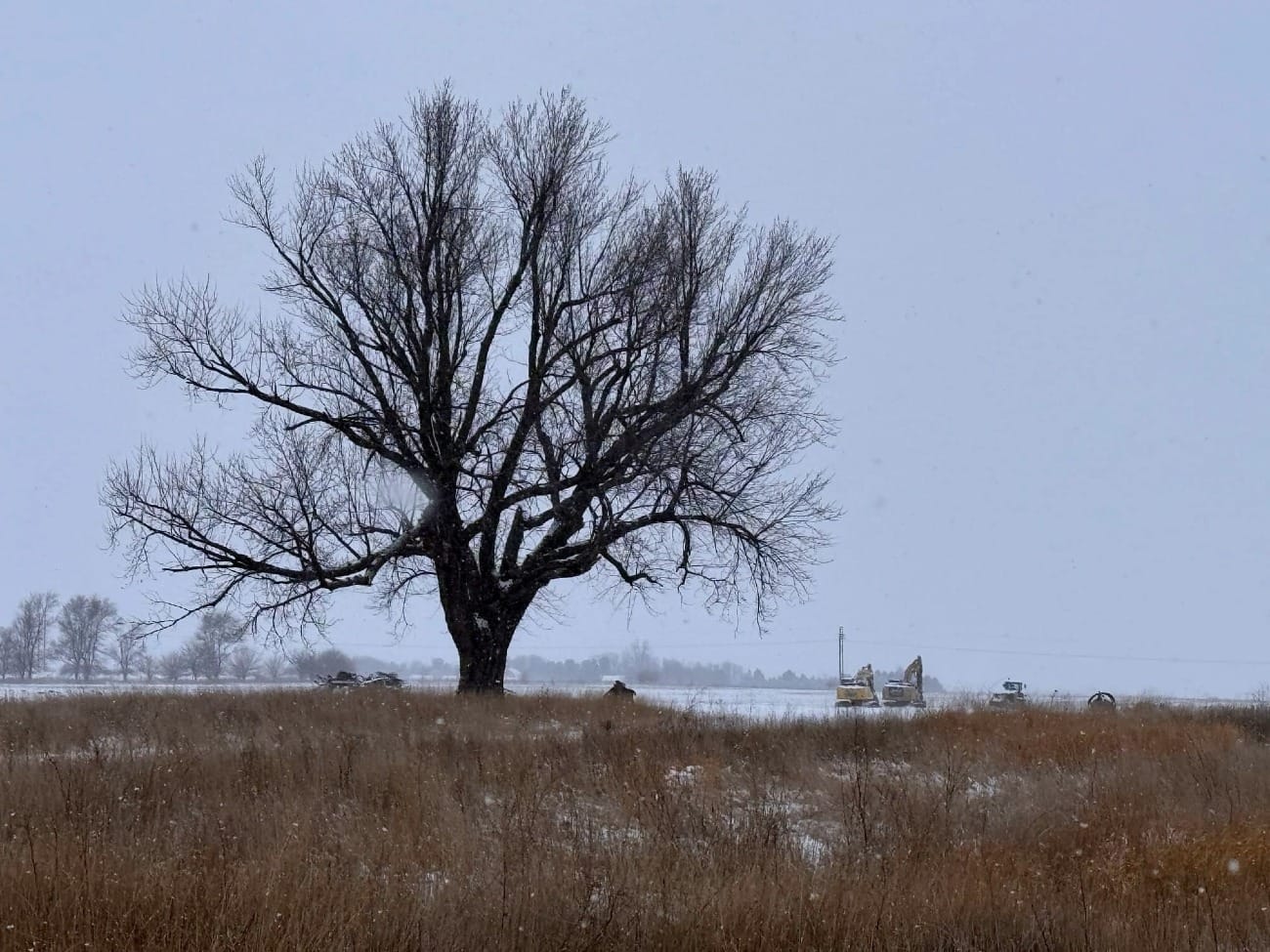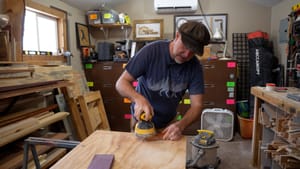CANTON, S.D. – It was early October of 2023 when Tom Eiesland learned that the land he farmed for more than four decades was slated to become a prison.
Located at the corner of 278th Street and 477th Avenue in rural Lincoln County, adjacent to where Eiesland lives, the farmhouse and cropland were owned by Alfred and Ethilda "Tillie" Haug and managed by a caretaker and family friend named Earl Helgeson.
Eiesland started working the land when Helgeson retired in 1982, living on the property for about a decade with his wife, JoAnn. Their son and daughter were born there and later had weddings under the towering maple tree near the main driveway.
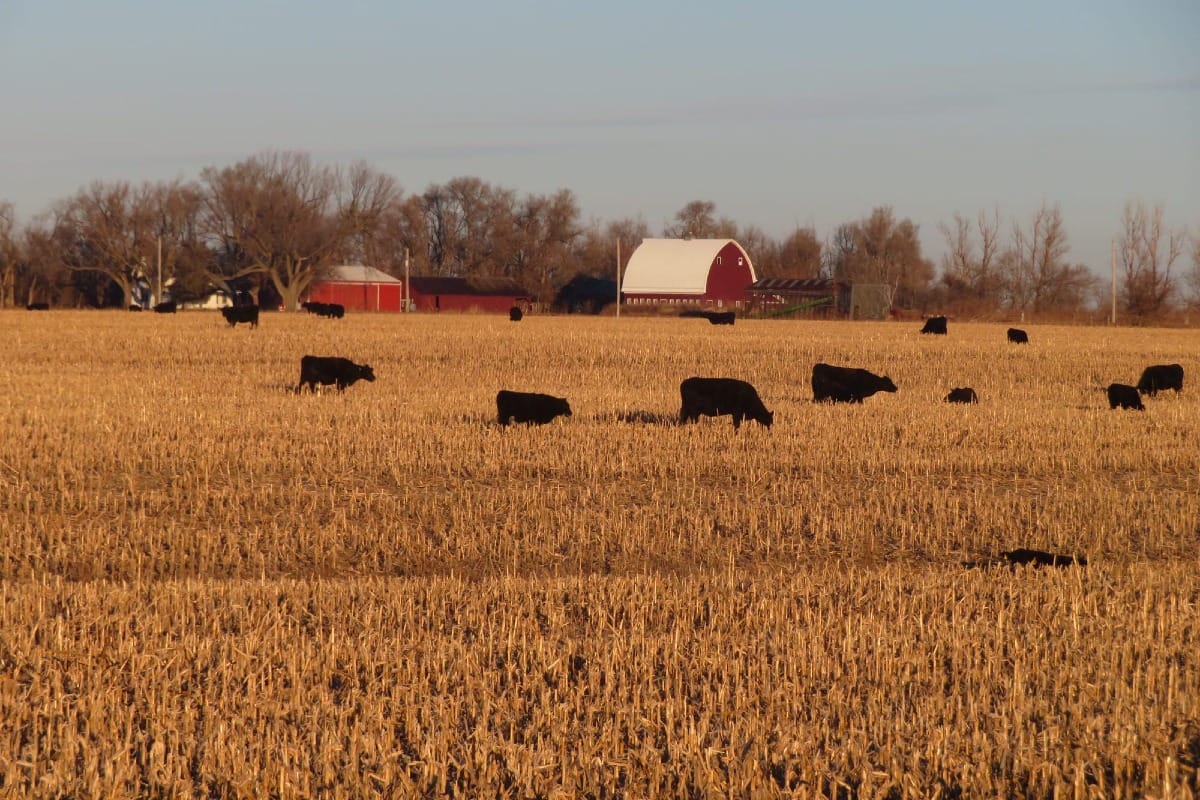
Eiesland continued to care for the land even after Tillie Haug died in 1990. Her husband had already passed.
Two years later, because the couple had no heirs and no will, the 320 acres were acquired by the state’s Office of School and Public Lands. The Eieslands moved into a nearby house previously owned by Tom's uncle, and they leased the former Haug farmland from the state.
“(The Haugs) and Earl (Helgeson) knew that if they didn’t do something with the will that the land would probably revert to the state,” said Eiesland, 75. “They didn’t view that as such a bad thing.”
But the way the prison project has played out has tarnished any goodwill that existed, said Eiesland, replaced by grave concerns about how a prison project described as a “small city within a city” will alter the rural community.
This is the final story in a three-part series seeking different perspectives on South Dakota's plan to build a new men's penitentiary on 160 acres of farmland in rural Lincoln County. Here are links to Part 1 and 2:
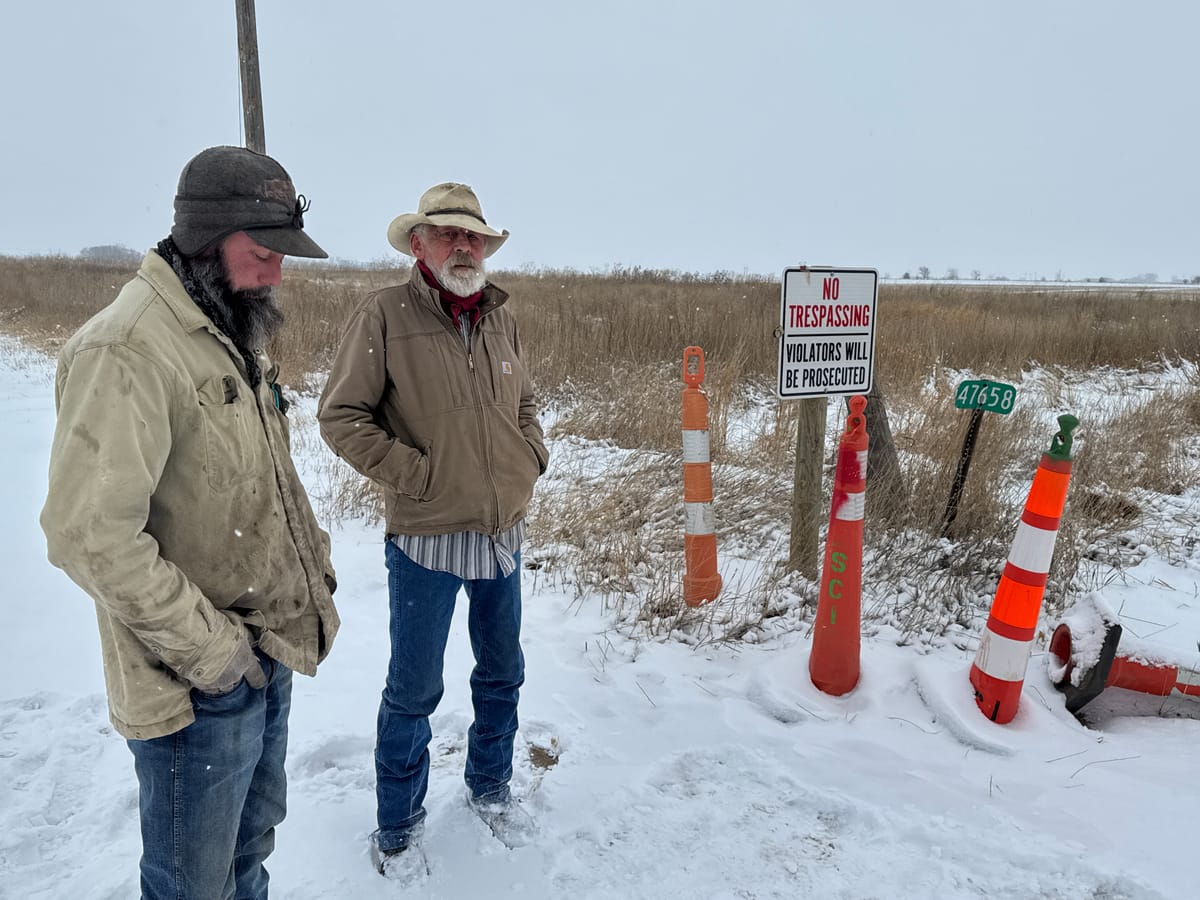
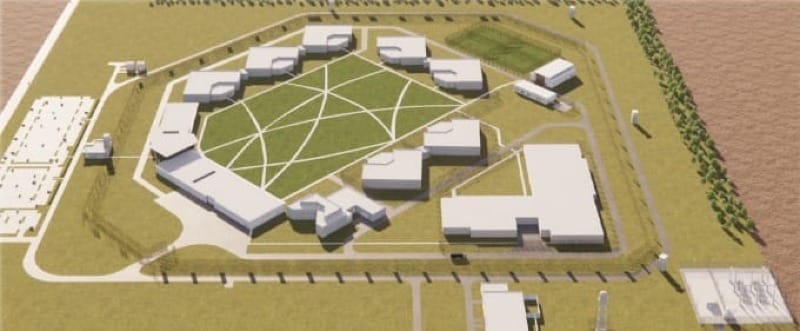
Asked what the previous owners would think of the Department of Corrections putting a 500,000-square-foot complex on land previously reserved for corn, beans and cattle, Eiesland was blunt in his assessment.
“They’d be rolling over in their graves, I guarantee you," he said. "And they’re not the only ones. Certainly my family has a close connection because everything I have built and own is right next to (the planned site). But it's the destruction of this community that's the big thing because it will just absolutely destroy it.”
Community centered around church
Tom Eiesland was one of three children born to Alden and Wava Eiesland, who were married in 1940 and lived and farmed north of Canton.
For young Tom, growing up in the 1950s and '60s fostered a sense of belonging not just to one's immediate environs, but the broader community. They were the proud inhabitants of Beaver Creek, named for the spring-fed stream that flows through Canton before joining up with the Big Sioux River.
"Everybody up and down the road was either related to me or were good friends of my parents," said Eiesland, who recalled riding his horse up to the area where he now lives to work and spend time with his cousins.
Neighbors gathered for worship and ice cream socials at Beaver Creek Lutheran Church, a white wood-framed structure built in 1892 near Canton. It was closed for services in 1978.
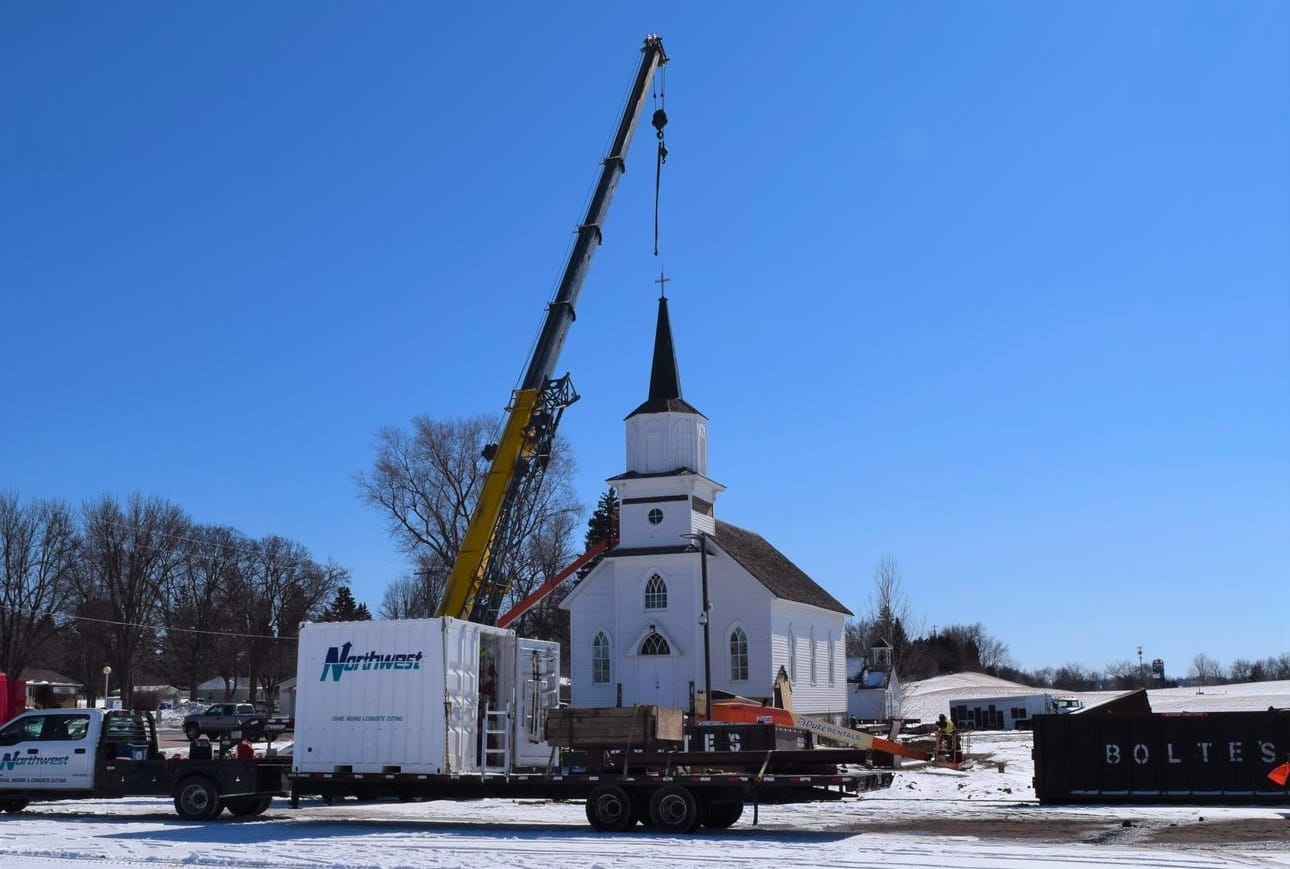
"People would come with their lawn mowers every other Wednesday night and they would mow the lawn in the church cemetery," Eiesland said.
In another sign of the times, the church was relocated to Heritage Park at Augustana University in Sioux Falls for historical purposes, then moved again in 2022 to Harrisburg to make room for the school's new hockey arena.
'We never felt like it was our own'
In 1968, Tom's parents bought 80 acres on 278th Street between Canton and Harrisburg off Highway 11, near where state prison construction would be planned 60 years later.
Property along the rugged gravel road, dotted with silos and grazing cattle, became home for much of the extended Eiesland clan. Tom has not lived anywhere else since returning from attending the University of South Dakota in 1969.
His feelings about the timeless nature of the place are captured in a memory that involves him taking a team of horses and wagon down his driveway to meet up with like-minded neighbors.
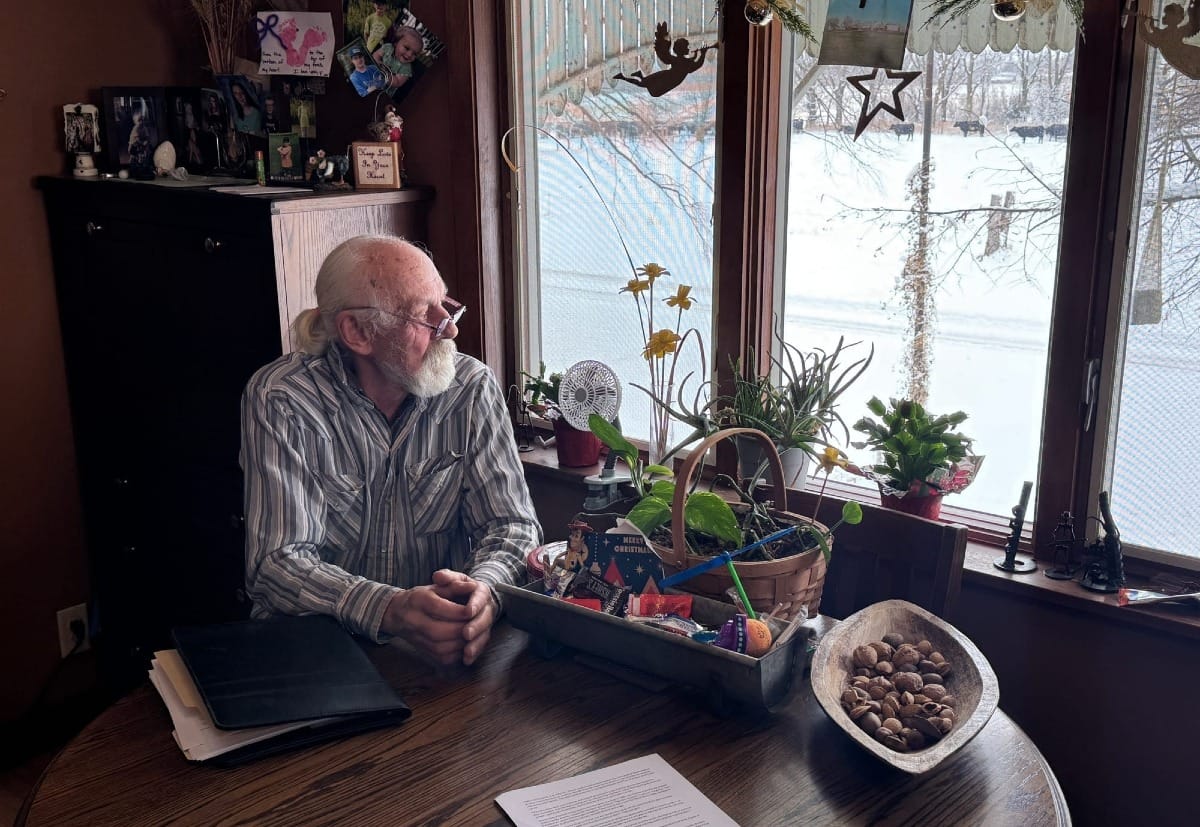
"I came out with my team and wagon and I looked down the road, and there was Uncle Alex, who had his team out, and another neighbor, and I thought, 'How long has it been since there were three teams of horses on the road around here?'"
The Haugs' farm on the north side of 278th Street featured a bright red barn with a white roof, fields of corn and alfalfa, and roaming cattle. Those sights became part of Eiesland's daily routine when Helgeson retired in 1982 and Tom started leasing the land, soon after marrying JoAnn.
"It was a privilege to manage and take care of it, but we never felt like it was our own," said Eiesland. "It belongs to the state. It's their land, and we've never felt any different. The problem we have is with how they went through with the process."
'How would you feel? What would you do?'
Sam Eiesland, Tom's son, serves on the board of Neighbors Opposed to Prison Expansion, or NOPE, a group of Lincoln County landowners that has fought the state’s effort and sued to prevent the project from moving forward.
On Oct. 23, a circuit judge granted the state’s motion to dismiss the lawsuit and determined that several of the plaintiffs, including Tom Eiesland, didn't have standing to sue. In Eiesland's case, the judge wrote, "a wish to not have a prison located by one's property is not an injury in fact."
The remaining plaintiffs have appealed the ruling to the South Dakota Supreme Court. It's not known when that decision will be handed down.
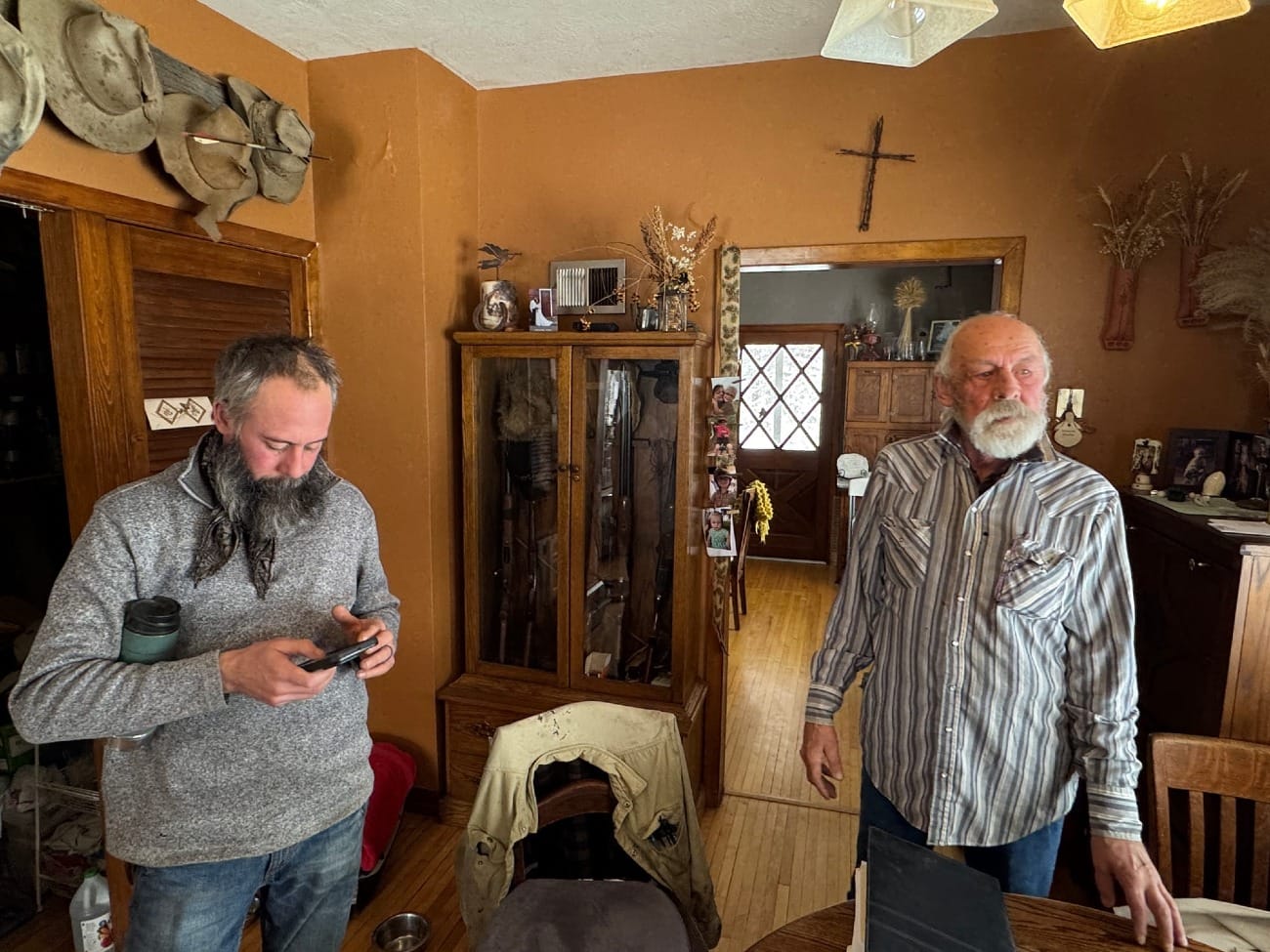
Much of the neighbors' frustration is aimed not at the fact that Lincoln County was chosen but that more suitable plots of land could have been targeted for such major development.
“The original premise of our county’s comprehensive plan, requested by the state, was to keep commercial and light industrial along the corridors where it’s beneficial and desirable,” said Sam Eiesland, a superintendent of Canton Township. “The state helped us write that original plan, and now they’re saying that they don't have to follow it."
His father, through letters and appearances at public meetings, has criticized what he sees as a lack of transparency from state officials and a lack of gumption from Lincoln County commissioners, some of whom he believes have not sufficiently engaged in zoning and sovereignty debates.
"As far as we're concerned, the county commission should have brought the lawsuit instead of us," Tom Eiesland said. "When people rise up and do something like that, it's usually because other people aren't doing their jobs."
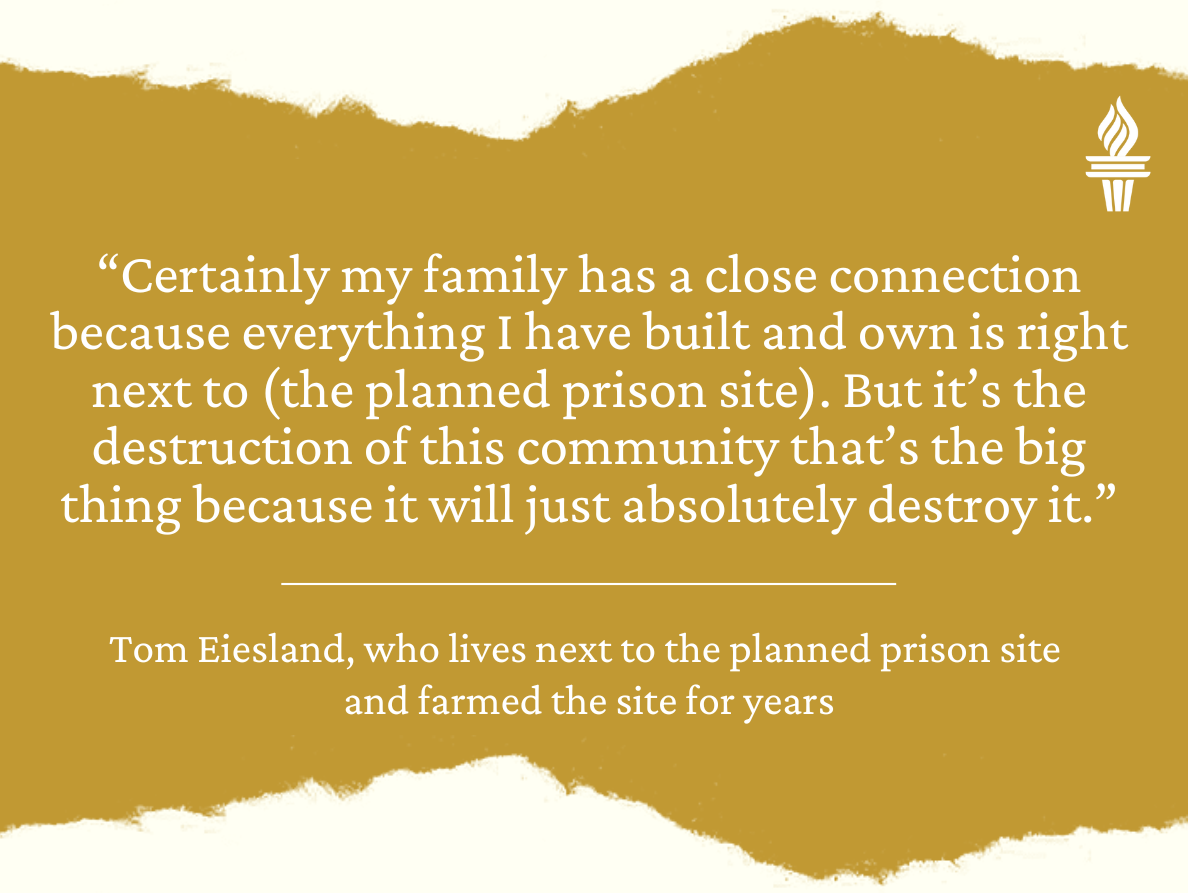
As Lincoln County's population surges in southern Sioux Falls, Harrisburg and Tea, it gets harder to bridge the divide between economic development and the county's agricultural core. In many ways, the struggle involves varying explanations of how to best define progress.
"I've driven through that area many times to see where people live and where the prison will be," said Jim Schmidt, who has served on the county commission for 27 years. "It's helpful to do that just for your own edification and to ask, if you were one of these people, 'What would you do? How would you feel?' It's important to ask those questions."
For new and old residents, 'the dream is gone'
On a recent Saturday morning, Tom Eiesland sat in his kitchen with his dogs, going through photos of the red barn and white farmhouse that used to be part of the scenery along 278th Street looking west.
The buildings were razed by state-hired crews in January along with other buildings, even though the actual prison construction will take place on an adjacent lot.

Tom and Sam then hopped in a Jeep and drove down to the entrance of the former Haug farmstead. A layer of snow covered the roads and familiar fields. The maple tree under which wedding celebrations occurred was one of the few landmarks still standing on the property.
There were orange pylons near the driveway and a sign that said, "No Trespassing. Violators Will be Prosecuted." Construction equipment sat idle in the distance, awaiting the results of legislative fights over final funding for the prison.
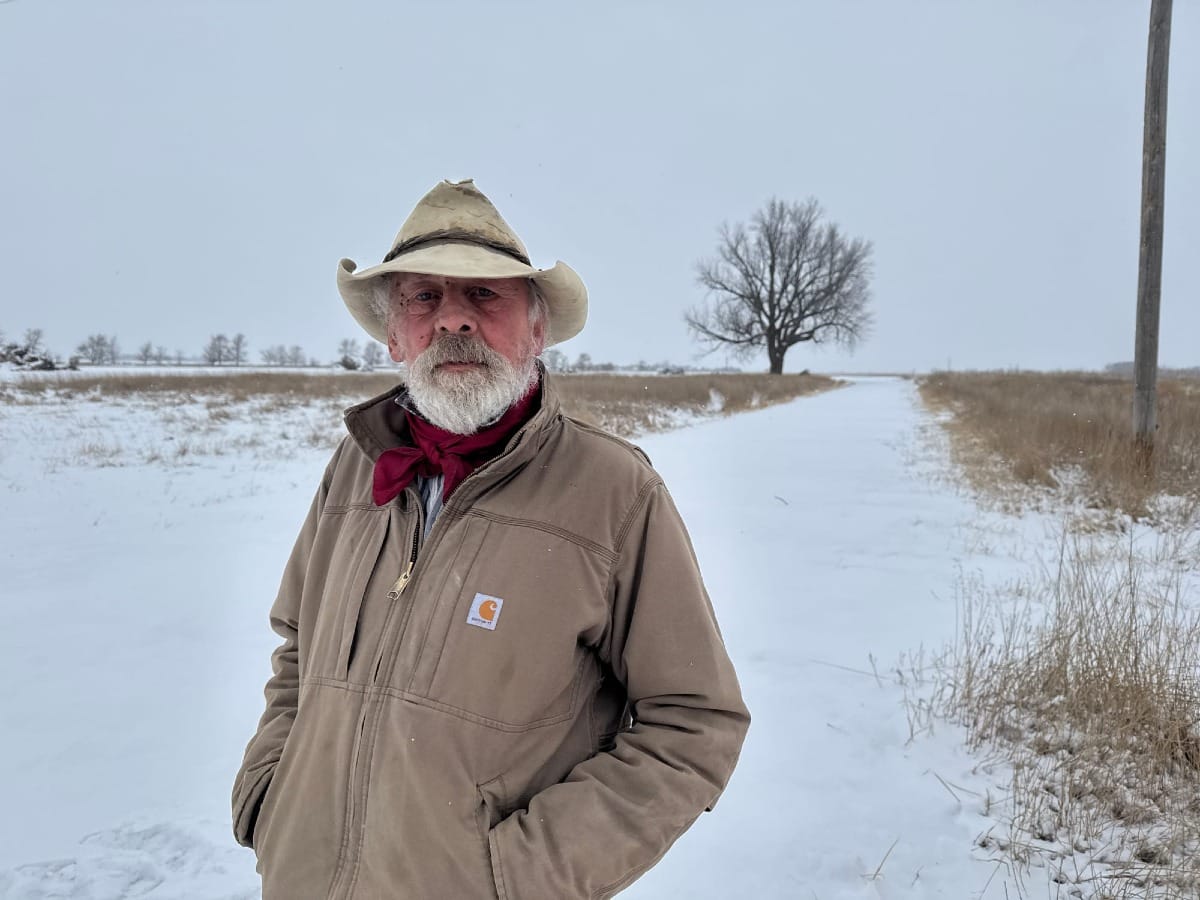
"I used to go in there every day when they first started working, and then I was told that if I entered, I'd be arrested," said gray-bearded Tom Eiesland, braving the cold with a weathered hat and red bandanna around his neck.
"The decision to (tear down buildings) was nothing but spite and vindictiveness, in my opinion," he added. "They had no reason to do it. When they start building, they're not building in that spot. They're building on the other side. The only reason to come in there and knock all that down was to say, 'We'll show you.'"
The state also owns 160 acres on the south side of 278th Street, with no current plans for that land. The South Dakota Department of Transportation has outlined plans to build new roads to service the 1,500-bed prison, where Eiesland used to run his team of horses.
For Tom, seeing the barn and farmhouse destroyed by work crews was distressing. But buildings come and go, he said. His primary concern is more pastoral – like the onset of daily traffic that will drown out the serenity of his surroundings and that of future generations.
"It's always been a close community," he said. "We weren't all best friends, but we were always neighbors who were there for each other. It's still that way. You have young families who moved here looking for a quiet, peaceful existence, and they're the ones that I really feel bad about. If this thing gets built, that dream is gone."
This story was produced by South Dakota News Watch, an independent, nonprofit organization. Read more stories and donate at sdnewswatch.org and sign up for an email every few days to get stories as soon as they're published. Contact Stu Whitney at stu.whitney@sdnewswatch.org.

